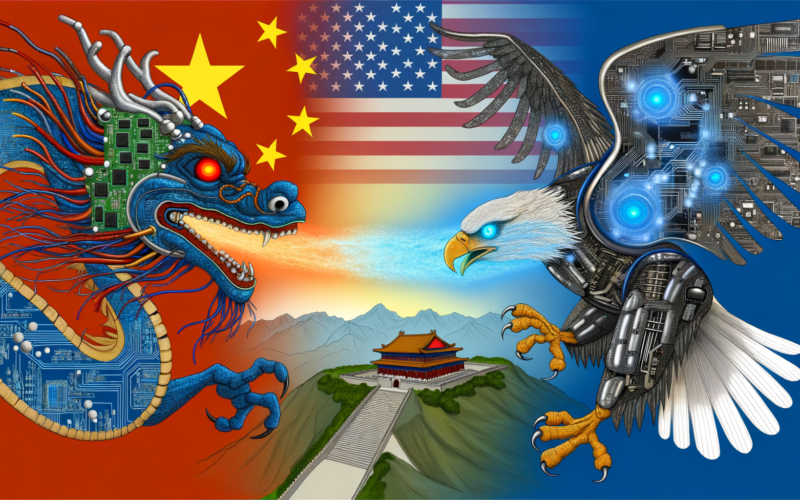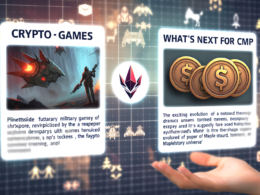Is China’s MiniMax-M1 AI a game-changer? Discover how it competes with US AI powerhouses, shifting the AI landscape! #AI #TechNews #ChinaInnovation
- Introduction: Decoding MiniMax-M1’s Impact on Global AI Dynamics
- Why MiniMax-M1 Matters in Today’s AI Ecosystem
- The Journey of AI: From Concept to MiniMax-M1
- Main Insights on MiniMax-M1’s Capabilities
- Overcoming Challenges: The Roadblocks to MiniMax-M1’s Adoption
- What Lies Ahead for MiniMax-M1: Emerging Trends and Predictions
- Final Reflections on MiniMax-M1: Lessons and Insights
Introduction: Decoding MiniMax-M1’s Impact on Global AI Dynamics
In the rapidly evolving world of artificial intelligence, a new entrant from China is making waves—the MiniMax-M1. This cutting-edge AI model, developed by the Chinese startup MiniMax, has emerged as a formidable open-source reasoning model boasting impressive capabilities. With its ability to process a million tokens of context, MiniMax-M1 stands toe-to-toe with some of the most advanced AI models like Google’s Gemini 2.5 Pro, yet it is freely available to the public. This accessibility positions it as a potential contender against industry giants such as OpenAI’s ChatGPT and Anthropic’s Claude. As we delve into the merits and limitations of MiniMax-M1, we explore its potential to shift the global AI landscape and redefine the competitive dynamics between East and West.
Why MiniMax-M1 Matters in Today’s AI Ecosystem
MiniMax-M1 represents a significant departure from the traditional AI development narrative dominated by expensive, closed-source models primarily from Silicon Valley. By providing a high-performing, open-source alternative, MiniMax-M1 challenges the conventional wisdom that top-tier AI must be costly and Western in origin. This model offers developers and organizations worldwide an opportunity to experiment, modify, and enhance AI capabilities without the constraints of proprietary systems. As we dissect the implications of MiniMax-M1, we uncover how its existence could democratize AI access and spur innovation across diverse industries.
The Journey of AI: From Concept to MiniMax-M1
Tracing the Evolution of AI Models
Artificial intelligence has undergone a remarkable transformation since its inception, evolving from rudimentary algorithms to sophisticated models capable of deep learning and complex reasoning. Early AI systems were limited in scope, often confined to specific tasks with minimal adaptability. However, advancements in computational power and algorithmic sophistication have paved the way for models like MiniMax-M1 that can process vast amounts of data and perform intricate reasoning tasks.
The Role of Open-Source in AI Development
Open-source AI models have played a pivotal role in accelerating innovation by fostering collaboration and knowledge sharing. Unlike proprietary models, open-source platforms allow researchers and developers to build upon existing work, leading to rapid advancements and cost-effective solutions. MiniMax-M1 exemplifies this trend by offering a powerful reasoning model that is accessible to all, encouraging a global community of developers to contribute to its refinement and application.
Main Insights on MiniMax-M1’s Capabilities
Redefining Long-Context Reasoning with MiniMax-M1
One of MiniMax-M1’s standout features is its unparalleled ability to handle extensive context, processing up to a million tokens. This capability is particularly valuable for tasks that require understanding and synthesizing large volumes of information, such as legal document analysis, scientific research, and complex decision-making processes. By surpassing the limits of traditional models, MiniMax-M1 opens new avenues for AI applications in industries where context comprehension is critical.
Benchmarking MiniMax-M1 Against Industry Leaders
In benchmarking exercises, MiniMax-M1 has demonstrated performance metrics on par with some of the leading AI models. While it does not outright outperform giants like OpenAI’s ChatGPT in every aspect, its competitive edge lies in its open-source nature and cost-efficiency. For instance, MiniMax-M1’s reinforcement learning phase required significantly fewer computational resources compared to proprietary models, highlighting its potential for scalable deployment in resource-constrained environments.
Creative Writing and Storytelling: A Mixed Bag
Despite its strengths, MiniMax-M1 encounters challenges in creative writing and storytelling tasks. While capable of generating narrative content, the model often produces prose that lacks depth and originality. Common issues include rushed pacing, mechanical transitions, and a tendency to cram multiple plot elements into a limited space, resulting in superficial storytelling. However, by recognizing these limitations, developers can focus on refining MiniMax-M1’s creative capabilities through community-driven enhancements.
Information Retrieval: A Reliable Performer
In information retrieval tasks, MiniMax-M1 excels by accurately extracting specific data from large documents. Its ability to navigate and process lengthy texts without errors makes it a valuable asset for research and data analysis applications. However, the model’s tendency to over-reason can occasionally lead to extended processing times, emphasizing the need for optimization strategies to streamline its performance.
Coding and Programming: A Competitive Edge
MiniMax-M1 showcases impressive prowess in coding and programming tasks, applying its reasoning skills to generate high-quality code. In tests, it successfully created a basic stealth game with innovative features, demonstrating creativity and technical competence. This capability positions MiniMax-M1 as a valuable tool for developers seeking cost-effective solutions for software development and algorithmic problem-solving.
Overcoming Challenges: The Roadblocks to MiniMax-M1’s Adoption
Addressing Limitations in Long-Context Processing
While MiniMax-M1 boasts an extensive context window, practical limitations exist in its implementation. The model struggles with prompts exceeding 500,000 characters, suggesting potential platform-imposed restrictions. Addressing these limitations is crucial to unlocking its full potential and ensuring seamless performance across diverse applications.
Ethical considerations and censorship present significant challenges for AI models, particularly those developed in politically sensitive environments. MiniMax-M1’s approach to sensitive topics and political bias reflects the complexities of balancing freedom of expression with responsible AI deployment. As users explore the model’s capabilities, understanding its ethical boundaries becomes essential to mitigating potential risks.
What Lies Ahead for MiniMax-M1: Emerging Trends and Predictions
The Future of Open-Source AI Models
The rise of open-source AI models like MiniMax-M1 signals a shift towards greater transparency and collaboration in AI development. As more organizations embrace open-source platforms, we can expect accelerated innovation and democratized access to cutting-edge technology. MiniMax-M1’s success could inspire similar initiatives, fostering a competitive landscape that challenges traditional AI powerhouses.
MiniMax-M1’s Potential Impact on Global AI Dynamics
By offering a viable alternative to Western AI models, MiniMax-M1 has the potential to reshape the global AI ecosystem. Its open-source nature empowers developers worldwide to contribute to its evolution, fostering a diverse array of applications across industries. As the model continues to evolve, its influence on AI policy, regulation, and competition will become increasingly significant.
Final Reflections on MiniMax-M1: Lessons and Insights
In conclusion, MiniMax-M1 represents a bold step forward in the realm of open-source AI, challenging the status quo and offering a glimpse into the future of collaborative technology development. While it may not yet dethrone established AI giants, its capabilities and accessibility position it as a valuable contender in specific domains. As the AI landscape continues to evolve, MiniMax-M1’s journey serves as a testament to the power of open-source innovation and its potential to drive meaningful change in a rapidly advancing field. By embracing this model, developers and organizations can explore new possibilities, push the boundaries of AI, and contribute to a more inclusive and dynamic technological future.











